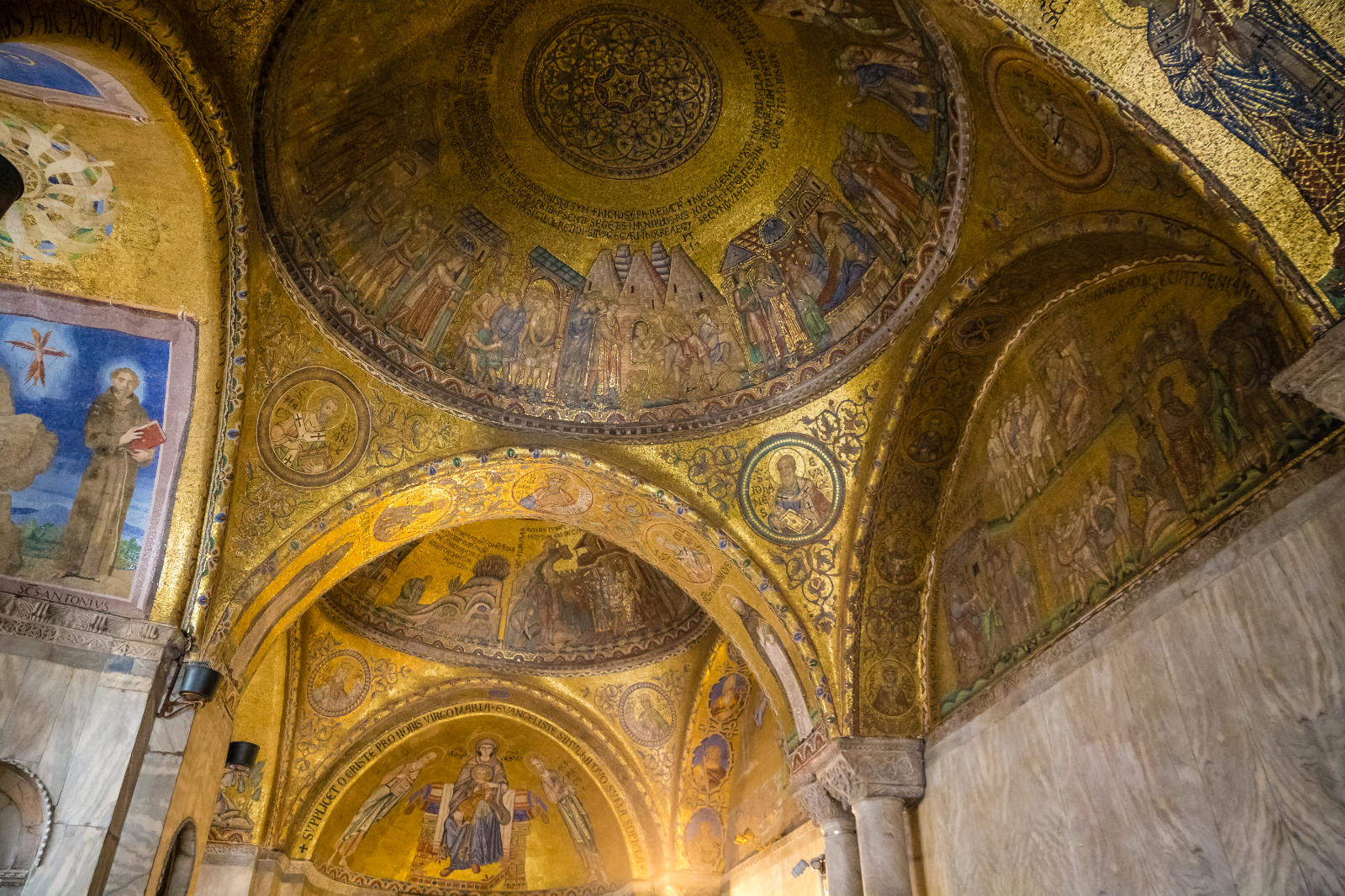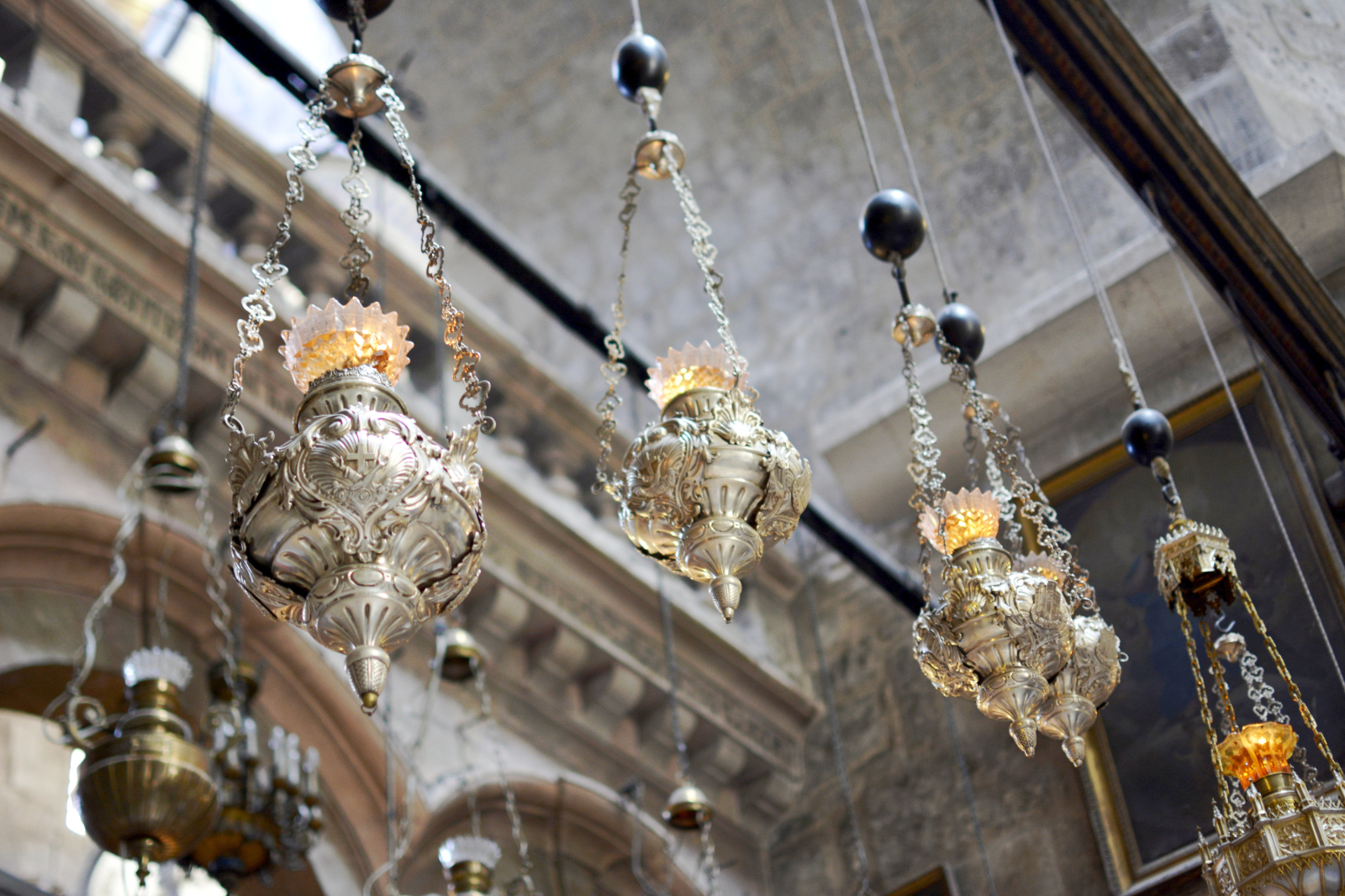
Interactions of colors and light
Observation of a scientist about the mosaics in St. Mark’s Basilica and question about the effects of the colors:
The lighting conditions in the chancel often leave something to be desired, especially in the curves of the apses. The individual tesserae, which together make up the image, are inserted at different angles. This applies to both the colored stones (lapis lazuli, malachite, etc.) and those made with gold foil. The central question is how much color can be perceived at all in changing light conditions, or to what extent the colors “outshine” each other in direct juxtaposition. In concrete terms: what remains of the black when it can be seen on a golden background? Which details are still relevant if their colorfulness cannot be sufficiently perceived?
Derivation of an answer and thesis from my current popular science book: Colors control human experience and behavior, because that is their biological and cultural function “The mysterious power of colors. How they influence our behavior and feelings.”

“I am the light of the world. Whoever follows me will not walk in darkness, but will have the light of life.” (Bible, John 8). The Neoplatonic philosopher Plotinus (*205, †270) coined the Christian metaphysics of divine light, the union of the human soul with God. The eternal light, which was constantly kept burning in the churches of the time in the form of thousands of candles and oil lamps, symbolizes the presence of God on earth.

During the frequent processions, people carried candles and torches that brought the light from the places of worship into the city. “At the moment when the Patriarch took a candle to give the divine fire to all those in the church who had torches, he saw how the church was suddenly filled with a divine light.” (Letter to Constantine Porphyrogennetos from the year 947)

The tesserae (tesserae) were pressed into the damp plaster at different angles to create a flickering, moving and lively illusion in the light of flickering oil lamps and candles. “Golden mosaic tiles cover the ceiling, and a sparkling golden glow floods down from them so that human eyes can hardly bear it. You would think you could see the midday spring sun as it gilds every height.” (Paulus Silentiarios, p. 341)

Interactions of colors and light
The mosaic technique can only be understood if one considers the interactions between light and color, which come to life with the slightest movement of the body. Due to the changing position of the golden stones, the reflections change with every tiny movement of the body. Paulus Silentiarios describes the type and effect of the lighting: “… silver polycandelas hanging from long chains, in which glass cups for the oil are inserted, polycandelas in the shape of crosses, individual lamps, silver bowls filled with oil, silver, oil-filled lamps designed as merchant ships and lamp stands located in the base area and the capitals.” (Paulus Silentiarios, pp. 347-535, Laskarina Bouras, Byzantine Lighting Devices, JÖB 32/3 pp. 479-491, Vienna 1982) Today, where we illuminate the walls and ceilings with individual spotlights or leave them completely in semi-darkness, these effects are no longer recognizable.
Link to the Collaborative Research Center“Material Text Cultures” at Heidelberg University
Link to the article about the workshop on the website of the Collaborative Research Center “Material Text Cultures”


